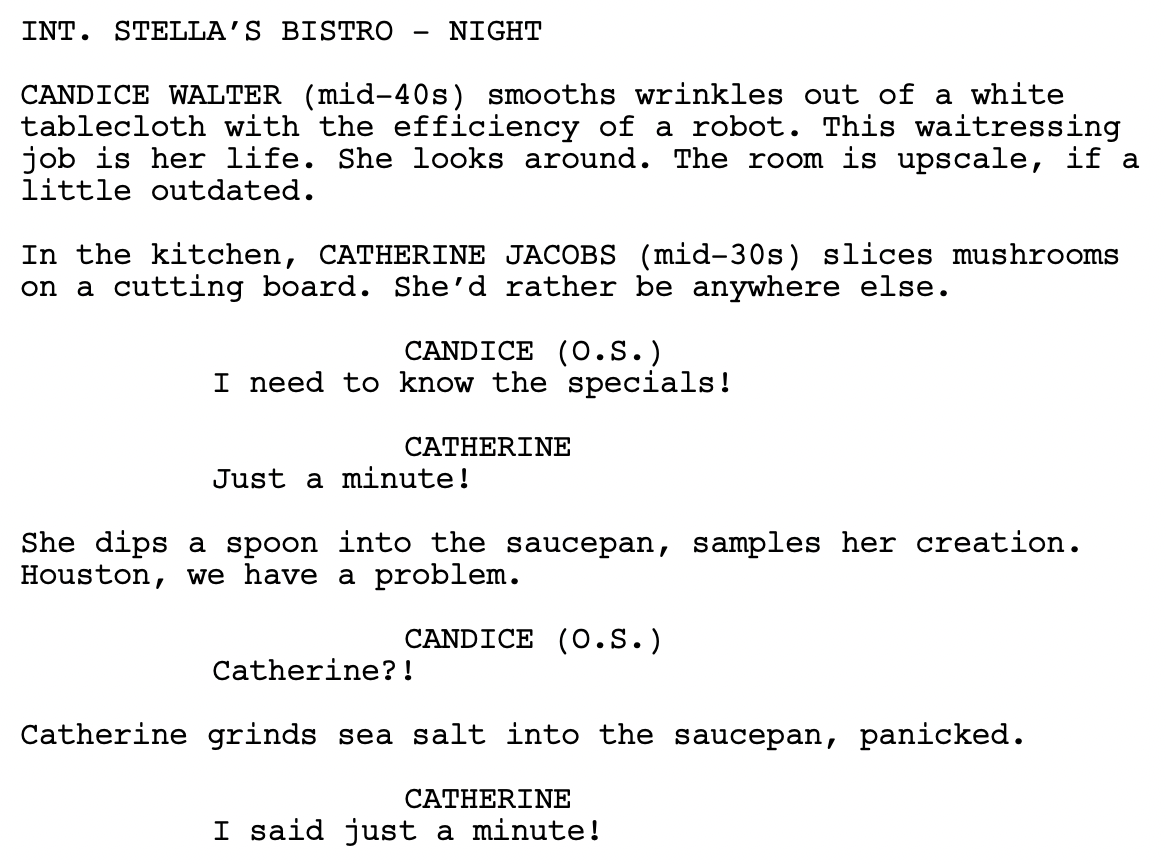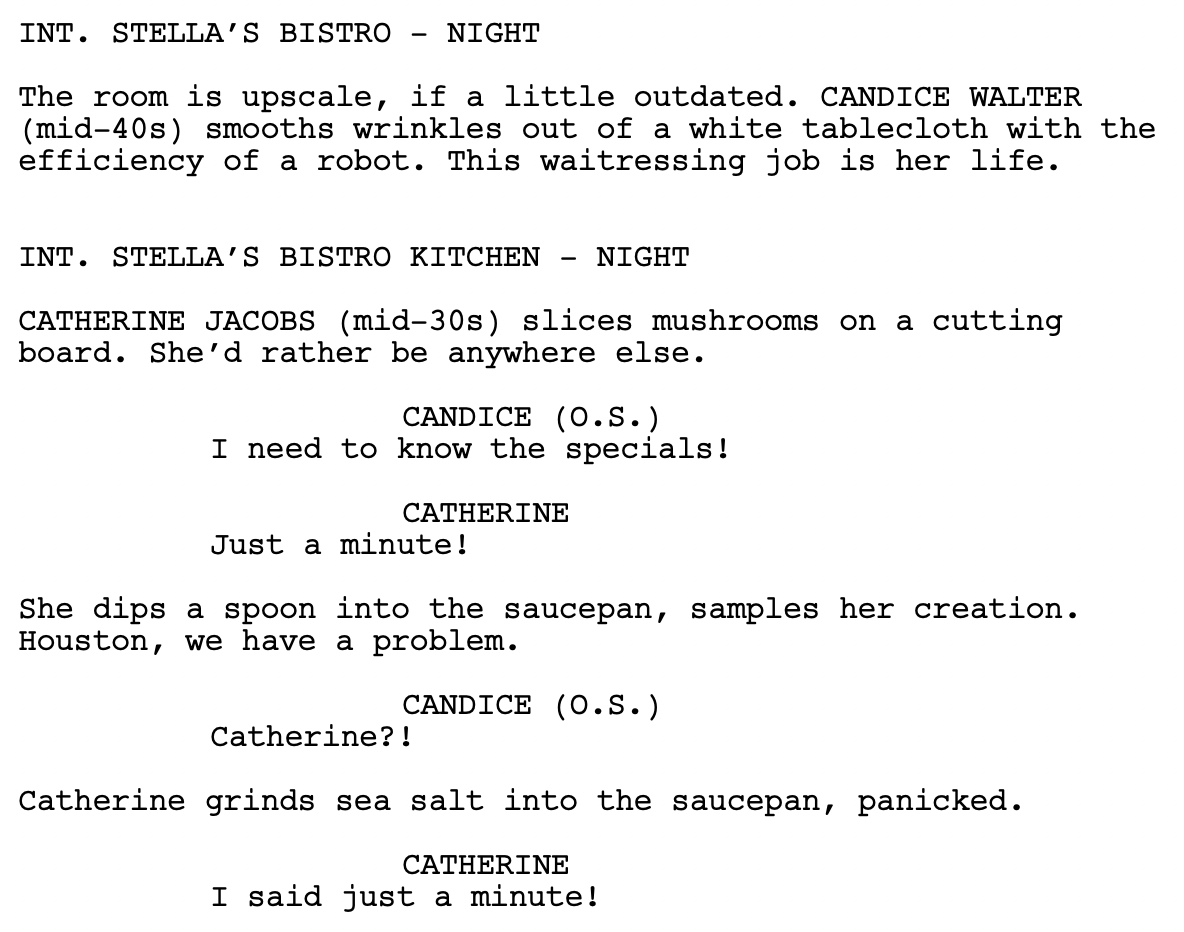Fix This - 2.1.25
We always recommend writers focus their first drafts and initial rewrites on the big stuff–story idea, character, plot, structure, etc. After all, what good does it do to massage the prose and dialogue when there’s a chance the entire scene could get changed or cut?
Once you have all your main story elements in a good place, you can turn your attention to fine-tuning the writing.
Take a look at the excerpt below. Can you spot the changes that would improve it?
The first change we’d make is the description of the restaurant should be moved to the beginning of the first paragraph. When the scene starts, the first thing we’ll see is the setting, then the characters. Help the reader follow the action by describing the location at the beginning.
Because we moved the scene description to the beginning, we’d now recommend cutting, “She looks around.” That sentence was mostly a lead-in to the details about the room. If it’s important to your story, you could keep it. Here, we decided to get rid of it because ending the paragraph with “this waitressing job is her life” gives it more oomph.
What’s the next change you would make?
When the action says, “In the kitchen”, it means we’ve moved to a new location. New locations need their own sluglines. Even though the kitchen is technically inside the restaurant and feels like it could fall under the general Stella’s Bistro scene heading, shooting that part of the script will require its own set up. That means, it’s a separate scene. New slugline!
Moving along, we meet Catherine. She’s slicing mushroom on a cutting board. Do you really need to tell us she’s using a cutting board? That’s a detail your reader will probably assume and is obvious enough you can take it out. The reasons to keep this kind of detail would be 1.) you’re setting up the cutting board because she uses it later in the scene to hit someone over the head, or 2.) if she were slicing mushrooms somewhere unexpected like on the floor.
What else would you change?
When Catherine dips her spoon in the saucepan, did you think, “What saucepan?” We did. She was just slicing mushrooms, and now she’s at the saucepan. The problem here is the word “the.” “The” makes it sound like we already know which saucepan the writer is talking about, but this is the first time it’s been mentioned. That can cause confusion.
To make the writing clearer, it’s better to either say “a saucepan” or give us more detail about “the saucepan” that helps us understand where it is in the scene.
There’s one more change to make, and it applies to the whole excerpt. Do you know what it is?
When you were reading this scene, did you start to confuse Catherine and Candice? Even if you managed to keep them straight, can you imagine how they might become confusing in a full-length screenplay?
Catherine and Candice start with the same letters. When you’re reading fast (as most readers do), it’s easy to get them mixed up. You can avoid this problem by changing one of your character’s names to something that starts with a different letter. Like this…
See how much easier that is to follow?
For more insight on how to write polished and professional scenes, sign up for our self-paced screenwriting course, Screenwriting Essentials. We’ll teach you everything you need to know to write a top-notch script.







